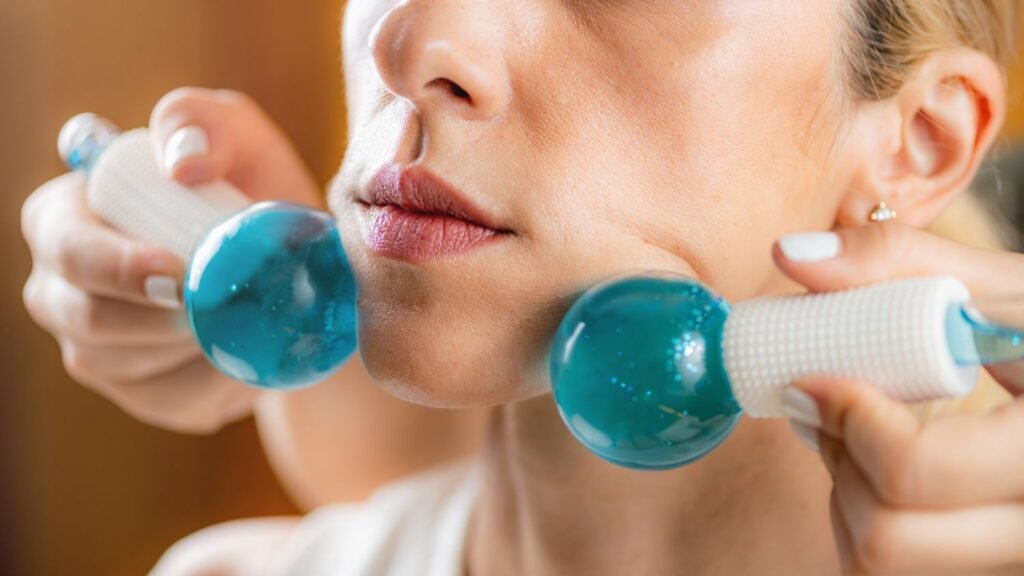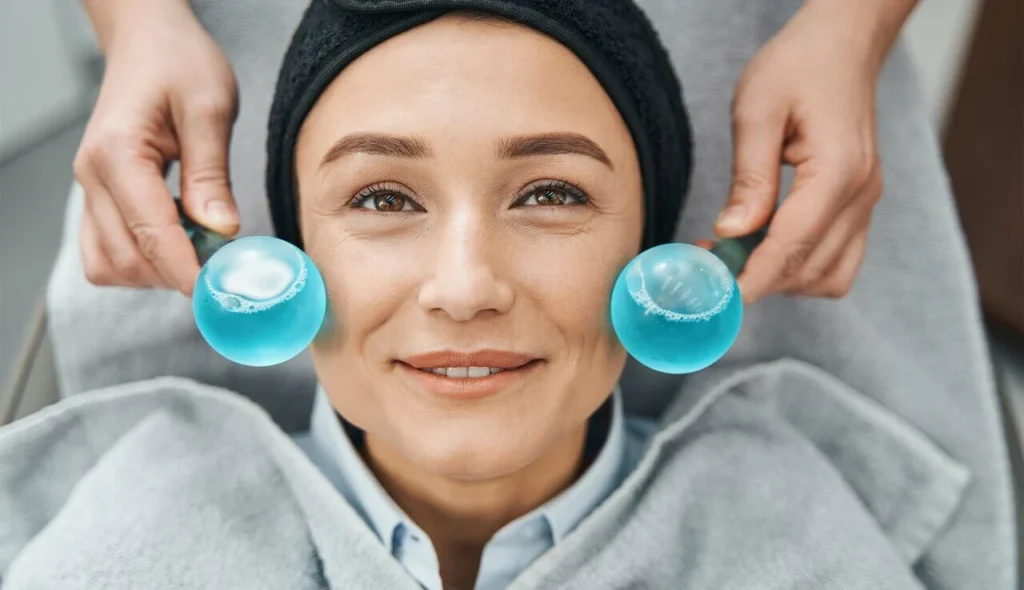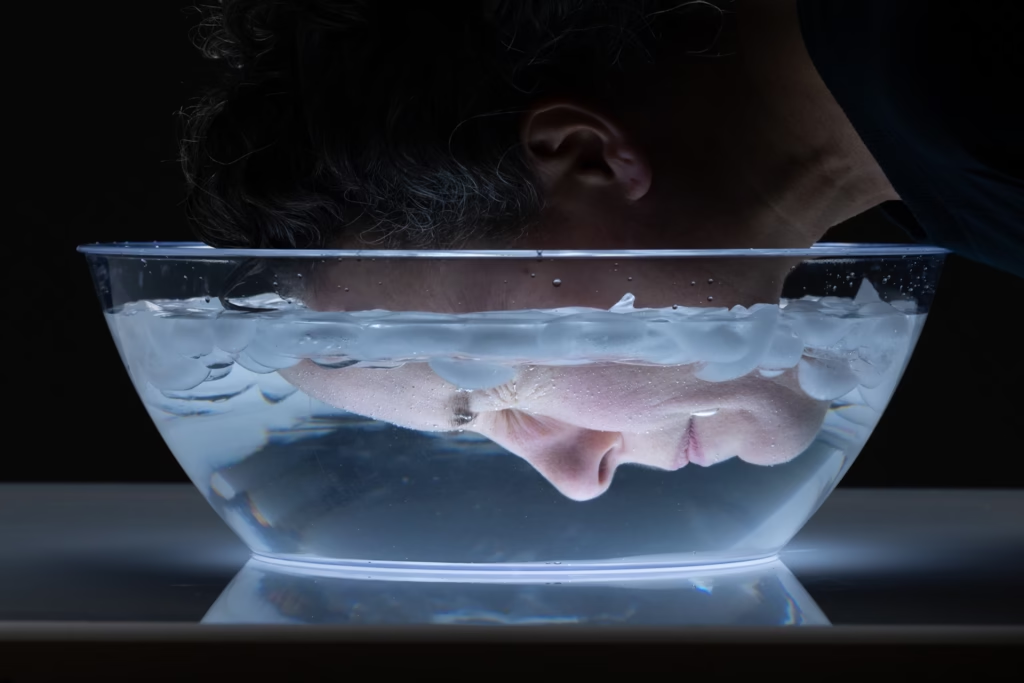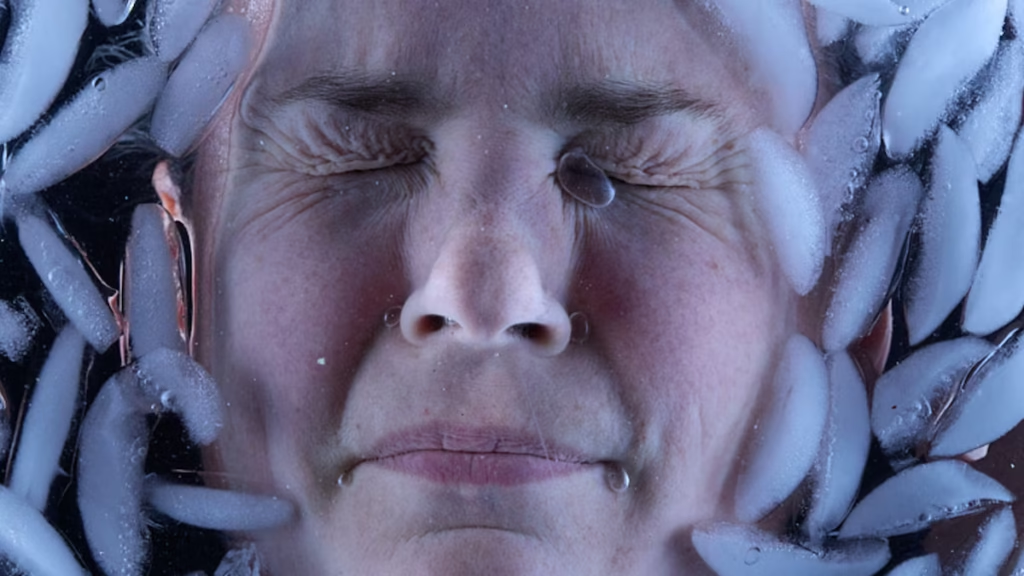Introduction
In the world of skincare, trends often come and go — but one age-old secret continues to make waves for its simplicity and effectiveness: applying ice on the face. Known as “facial icing” or “skin icing,” this refreshing ritual promises glowing skin, reduced puffiness, and a youthful appearance — all with something as basic as frozen water.
This simple beauty hack has roots in ancient skincare routines and is now backed by dermatologists and beauty experts for its refreshing, circulation-boosting effects. Cold therapy can do wonders for your skin when done correctly, helping calm inflammation, tighten pores, and revive tired skin.
But how does it actually work? And how can you make sure it’s safe for your skin type? In this guide, we’ll break down the real, science-backed benefits of ice on the face, how to use it properly, and what precautions you should take for the best results.

What Happens When You Apply Ice to Your Face?
When you glide an ice cube over your skin, it immediately triggers a physical response known as vasoconstriction — your blood vessels narrow due to the cold. This reduces blood flow to the surface, helping to calm redness and swelling.
Once the cold is removed, your body naturally compensates by increasing blood circulation to warm the area again. This sudden boost brings oxygen and nutrients to your skin, creating a fresh, radiant glow.
Additionally, the cold temperature can temporarily tighten skin, reduce excess oil, and make pores appear smaller. These effects may be short-term, but they can make a noticeable difference in your overall complexion and skin texture.
Top 7 Benefits of Applying Ice on Your Face
1. Reduces Puffiness and Swelling
One of the most immediate effects of facial icing is reduced puffiness — especially around the eyes. Cold temperatures help constrict blood vessels and limit fluid build-up under the skin. Morning puffiness, tired eyes, or even post-cry swelling can all benefit from a gentle ice massage. The result is a fresher, more sculpted look that feels instantly rejuvenating.
2. Calms Redness and Soothes Irritated Skin
If your skin is red, irritated, or inflamed from acne, sun exposure, or sensitivity, ice can be a quick remedy. The cold reduces inflammation and helps calm irritated nerve endings. It’s especially helpful after long sun exposure or before applying makeup to reduce redness. However, be gentle — icing should soothe, not sting.
3. Minimizes the Appearance of Pores
Ice can temporarily shrink the appearance of pores by tightening the skin’s surface. While it doesn’t actually “close” pores, the cooling effect makes them appear smaller and smoother. This can help create a flawless base for makeup and improve the skin’s texture instantly.
4. Gives Skin a Natural Glow
Improved blood circulation after icing makes your face look brighter and more awake. As the skin warms up again, oxygen-rich blood rushes to the surface, creating that natural post-facial glow. It’s a quick, cost-free way to revive dull or tired skin — perfect before an event or a morning start.

5. Helps Reduce Acne Inflammation
Ice can reduce the size, redness, and discomfort of acne breakouts. By numbing the area and constricting pores, it minimizes swelling and helps calm inflammation. Applying ice to an inflamed pimple for a few seconds can make it look smaller and less irritated. However, ice won’t treat the root causes of acne — it’s more of a spot-calming trick.
6. Temporarily Tightens Skin and Softens Fine Lines
Cold exposure makes skin appear tighter and firmer for a short time. Regular icing may help stimulate collagen production indirectly by improving circulation, giving skin a more youthful appearance. While it’s not a replacement for anti-aging treatments, icing can make your skin feel toned and refreshed.
7. Enhances Product Absorption
Applying ice before your skincare routine helps your pores tighten slightly after cleansing, allowing serums and moisturizers to absorb more effectively. When your skin’s surface is cool and calm, it better retains hydration and active ingredients, maximizing the benefits of your products.
How to Use Ice on Your Face Safely
Step-by-Step Guide:
- Start with clean skin. Wash your face to remove makeup, dirt, and oil.
- Wrap the ice. Never apply ice directly to your skin. Wrap it in a soft cloth or use a facial ice roller.
- Move gently. Glide the ice in circular motions over your face — cheeks, chin, forehead, and under eyes. Avoid pressing hard.
- Limit the time. Ice your face for about 1–2 minutes. Too much exposure can irritate or even damage the skin.
- Moisturize afterward. The cold can dry out your skin, so apply a hydrating serum or moisturizer after icing.
- Use clean materials. Always use fresh ice or clean tools to avoid bacteria buildup.

How Often Should You Ice Your Face?
Once a day — preferably in the morning — is ideal for most skin types. Over-icing can lead to dryness, redness, or even frostbite if done excessively.
Best Times to Ice Your Face
- Morning routine: Reduces puffiness and energizes dull skin.
- Before makeup: Helps create a smooth, tight base.
- After sun exposure: Calms sunburned or overheated skin.
- Before bed: Relaxes facial muscles and refreshes tired skin.
You can also use ice before applying a sheet mask or serum to boost absorption and reduce any potential irritation from active ingredients.
DIY Ice Cube Recipes for Extra Benefits
You can enhance your icing routine by adding natural ingredients to your cubes. Here are a few safe and effective combinations:
- Green Tea Ice Cubes: Rich in antioxidants, helps soothe acne and calm redness.
- Aloe Vera Ice Cubes: Hydrates and heals irritated skin.
- Cucumber Ice Cubes: Refreshes and cools for an instant glow.
- Rose Water Ice Cubes: Tones and hydrates sensitive skin.
- Coffee Ice Cubes: Reduces puffiness and brightens dull skin.
Freeze your chosen liquid in a clean tray, then use the cubes just like regular ice — wrapped in a thin cloth.
Important Precautions
While ice therapy is simple, misuse can harm your skin. Here’s what to watch out for:
- Never apply ice directly. Always wrap it in cloth or use an ice roller.
- Don’t overdo it. Keep each session under 5 minutes.
- Avoid if you have sensitive or damaged skin. Conditions like rosacea, eczema, or broken capillaries can worsen with cold exposure.
- Don’t use after cosmetic treatments. Avoid icing for at least a week after chemical peels, laser treatments, or fillers.
- Be gentle under the eyes. The skin is delicate — light, circular motions are best.
- Stop if it burns or tingles. That’s a sign of over-cooling or potential frostbite.
When used properly, ice is safe and beneficial for most people. The key is moderation and cleanliness.

Common Myths About Icing the Face
Myth 1: Ice closes pores permanently.
Not true — pores don’t have muscles to open or close. Ice only tightens the surrounding skin, making pores look smaller temporarily.
Myth 2: Ice can cure acne completely.
Ice helps with inflammation and redness but doesn’t treat the root causes like bacteria, oil, or hormones. It should complement, not replace, your acne treatment.
Myth 3: More time equals more benefits.
Longer icing doesn’t mean better results. Over-exposure can damage skin cells and lead to irritation or frostbite.
Myth 4: You can use ice anytime.
Timing matters — morning or after cleansing is ideal. Avoid icing right after exfoliating or applying active products.
Who Should Avoid Icing Their Face
Not everyone’s skin can tolerate cold therapy. You should avoid or consult a dermatologist before using ice if you have:
- Very sensitive or thin skin
- Rosacea or visible blood vessels
- Cold allergies (cold urticaria)
- Nerve damage or circulation problems
- Recent cosmetic procedures or open wounds
If your skin becomes excessively red, numb, or irritated after icing, stop immediately and let it recover.
Dermatologist Insights on Facial Icing
Most dermatologists agree that icing the face can be beneficial when used properly — as part of a broader skincare routine, not a standalone solution. It’s an easy, cost-effective way to improve circulation, reduce puffiness, and refresh your skin. However, experts warn against extreme cold exposure or direct contact, as it can cause irritation or micro-damage.
They recommend using gentle, clean techniques and pairing icing with moisturizing products afterward to maintain balance. In short: icing is great for a quick glow, but not a miracle fix for deeper skin concerns.
Read More: How Much Protein in 100 g Cooked Chicken Breast
Conclusion
Facial icing is one of the simplest and most affordable skincare practices you can add to your routine. In just a few minutes, it can make your skin look fresher, calmer, and more radiant. The cooling sensation not only wakes up tired skin but also improves blood flow, tightens pores temporarily, and reduces puffiness and redness.
However, like all skincare methods, moderation is key. Over-icing or improper use can cause irritation or frostbite. Always wrap the ice, move it gently, and follow up with moisturizer.
Think of icing as a natural skincare boost — not a magic cure. Used correctly, it’s an excellent way to refresh your complexion and give your skin an instant, healthy glow without expensive treatments. Listen to your skin, stay consistent, and you’ll see why this timeless beauty secret continues to stand the test of time.
FAQs
1. What are the main benefits of putting ice on your face?
It helps reduce puffiness, calm redness, minimize pores, brighten the complexion, and soothe acne inflammation.
2. How often should I ice my face?
Once a day is enough for most people. Overdoing it can dry out or irritate the skin.
3. Can ice remove pimples overnight?
No, but it can reduce the size and redness of pimples temporarily by decreasing inflammation.
4. Is it safe to rub ice directly on the skin?
No. Always wrap the ice in a thin cloth or use an ice roller to avoid burns or irritation.
5. Who should avoid using ice on their face?
People with very sensitive skin, rosacea, broken capillaries, or cold allergies should skip icing or consult a dermatologist first.